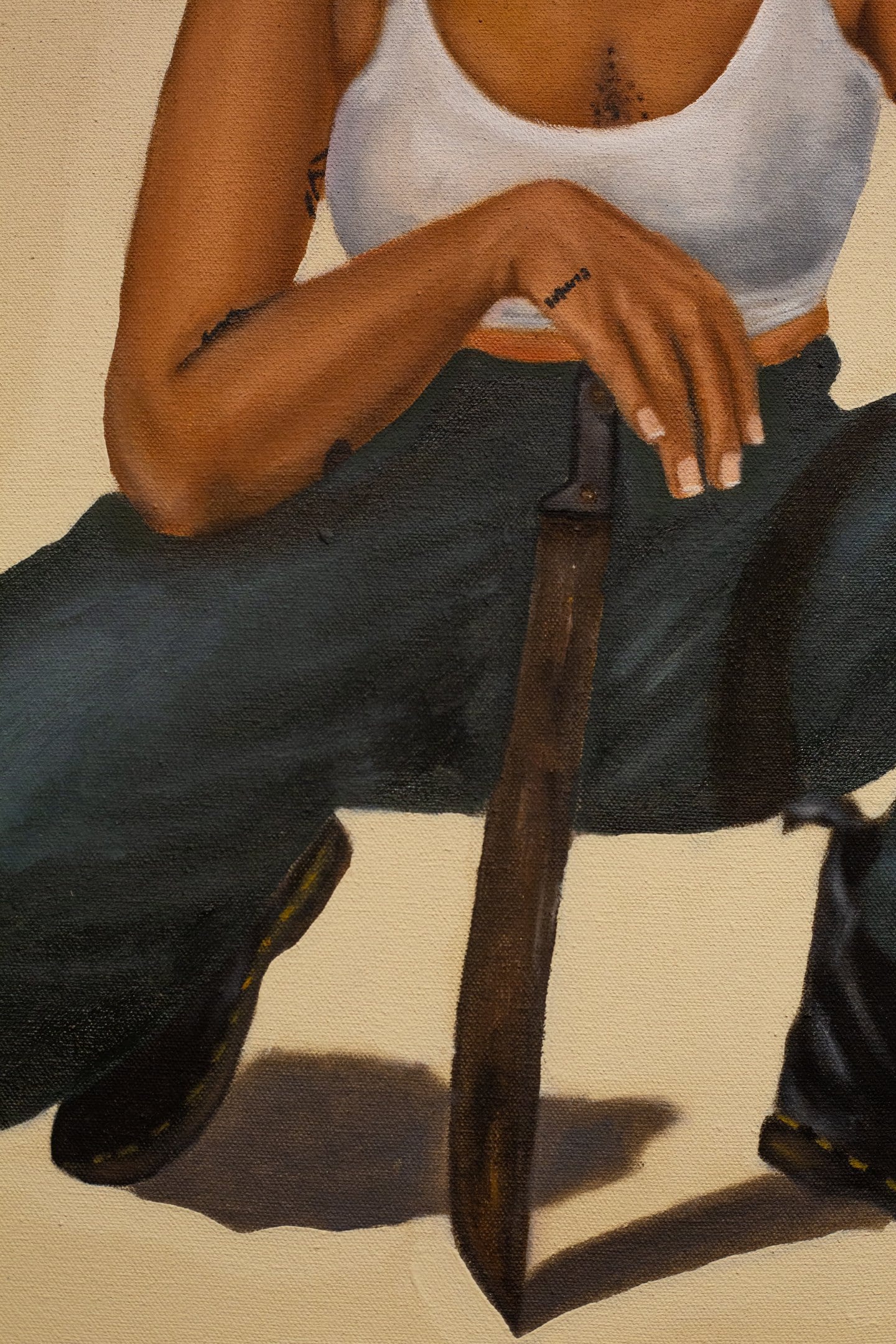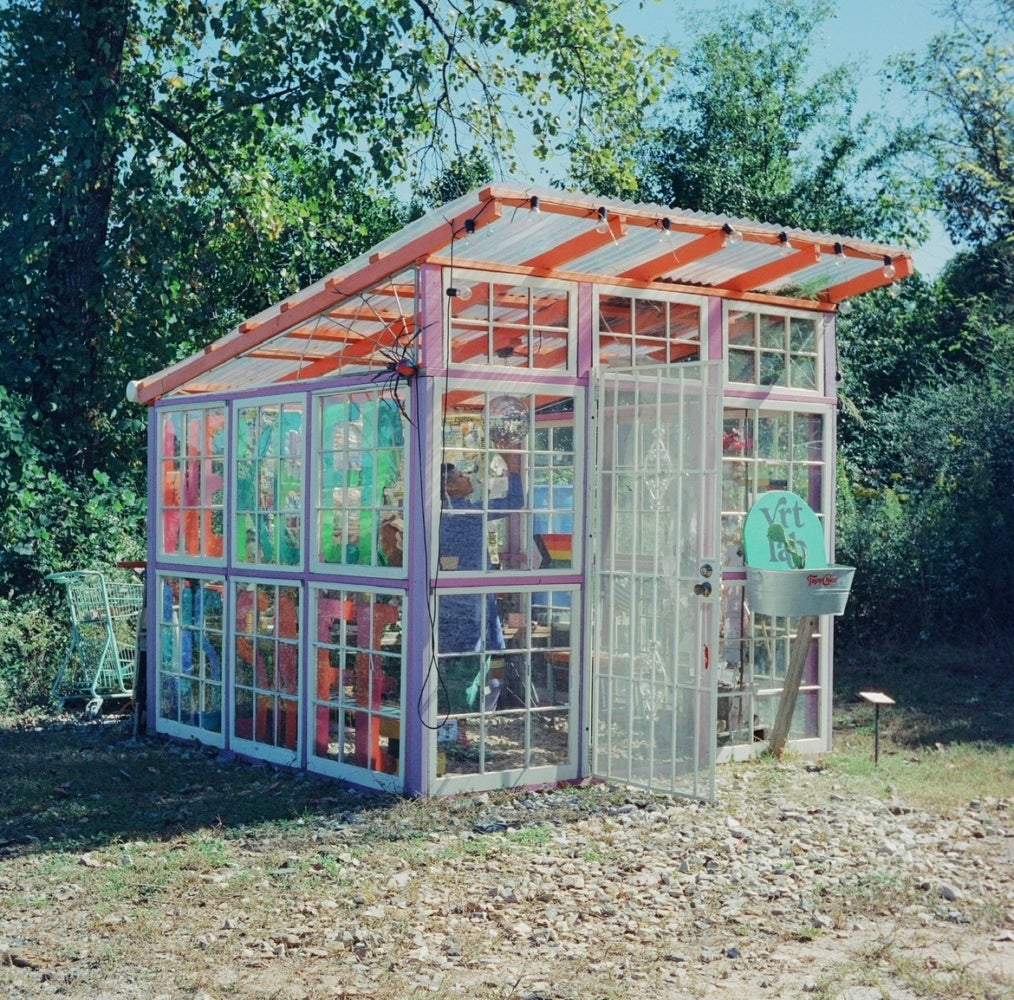
On a cold Saturday morning, I pulled into South River Art Studios and was immediately overwhelmed by the feeling that I had entered a sanctuary—a haven embraced by the raw, dramatic beauty that only nature can truly possess. Wide open land, tucked behind a modest neighborhood, and beyond the railroad tracks. A chicken coop and garden to the left. Warehouses, converted into studios, backed by the golden sun straight ahead. Within this haven dwells the creative practice of Tatiana Bell (she/any), a playful interaction designer born and raised in Atlanta, GA.
Tatiana Bell is an artist who understands that creation is inseparable from exploration, that to build something meaningful, one must first wander. This idea reveals itself not only in her work but also in her journey to becoming an artist. After two years of searching for her place, through architecture, civil engineering, and software engineering, she found herself in an interaction design program at Kennesaw State University. There, she began experimenting with art, UX, UI, and graphic design, steadily honing her artistic skills and discovering a community where she could listen to her people and in return create something meaningful.
For Bell, art and community are inseparable. Art is an outward expression and a connection to the larger world, shaped by her inner reflections on her identity. Being queer and mixed race, she naturally perceives the intersections between struggles that may, at first glance, seem separate. Stop Cop City. LGBTQ+ rights and protections. Police brutality. The ongoing genocide in Palestine. These movements are intertwined. To fight against one form of oppression is to fight them all—and to do so requires similar care, solidarity, and grief. This understanding led Bell to center grief in her latest project WE KEEP US SAFE, a continuation of her work creating spaces for connection and resistance.
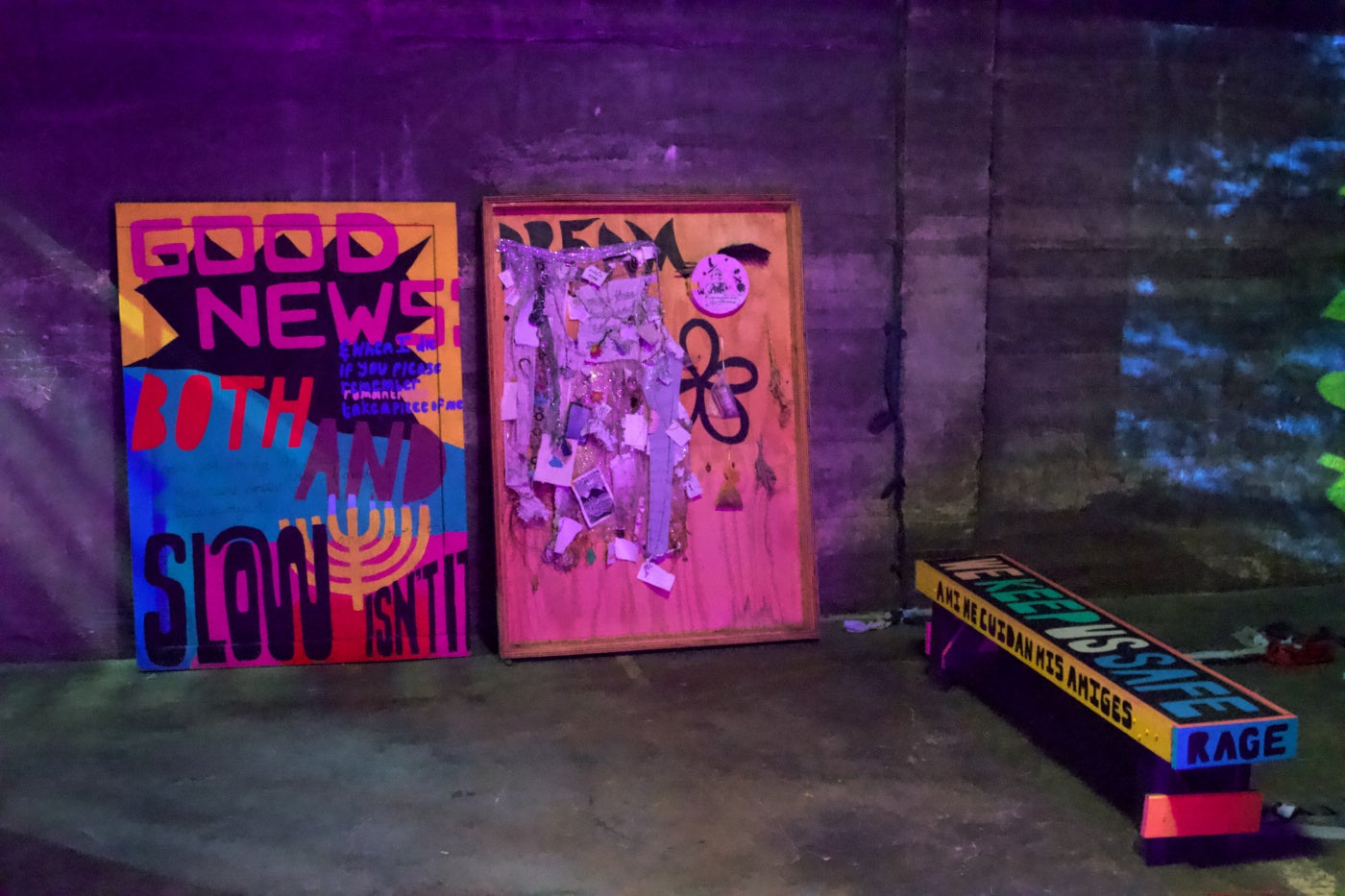
As a designer, she has a history of lending her skills to community-building efforts, co-curating the RESIST! Poster Exhibition in 2024—where twenty-five artists presented political posters in global solidarity with movements against the occupation in Palestine and the expansion of cop cities, with proceeds supporting mutual aid networks. She also co-organized Mutual Aid 101, a zine and workshop that gathered community members to explore the history, practice, and necessity of mutual aid. Whether through curation, design, or education, Tatiana’s work remains rooted in collective care and radical imagination.
Simply describing WE KEEP US SAFE as an installation would be a disservice to all that it is and all that it holds. It is a grief space, an archive, a communal effort to affirm the events of the present and the past. To walk into this space, the viewer is surrounded by banners, articles, poems, candles. Notes of vulnerability left by those you’ve never met. Simple sentences and phrases offering support: “We Keep Us Safe”, “Love is everywhere”, “We will continue to defend each other and the land that holds us”. It isn’t polished, there is no veneer covering up the rawness and that’s the beauty of it. It’s human. You can feel its heartbeat. As you stand in the WE KEEP US SAFE space you feel safe, but you also feel the fragility of safety.
WE KEEP US SAFE was born on land that exists between life and death—between the Welaunee Forest and the construction of Cop City. Cop City is the name given to the $90 million police training facility approved by the Atlanta City Council.1 Beyond the ecological devastation—hundreds of acres of the Welaunee Forest destroyed, the pollution of the South River worsened—this facility represents a deepening of systemic violence against Black, Brown,
and LGBTQ+ communities.
It was in this place of tension, where a beloved forest defender, Manuel Esteban Paez Terán, known as “Tortuguita” lost their life at the hands of Georgia State Patrol Troopers. This moment pushed Tatiana to reflect on the need for a space honoring not only Tortuguita, but also the grief being felt from the loss of loved ones, strangers, land, and stability.


According to Bell, “South River is this space where the Welaunee Forest is on one side and Cop City is on the other. That’s where I was feeling grief, and I knew others were too. There were memorials built in public spaces, but they kept getting destroyed. And they were heavy. They held the weight of people trying to process together. These spaces inherently became places of safety—for memory, for mourning. And at some point, it became about more than just Cop City. We’re all grieving so much.”
Bell spent time in an empty greenhouse, also known as the VRT Lab, located within South River Studios land, reflecting on this major loss. She knew this was not a task for one person. Bell began collecting words, flyers, protest memorabilia, zines, reflections and recordings and used these items to create an installation that would immerse you in the images, sounds, and emotions of the collective voice of resistance. Collecting these relics is especially important in a time when the already-altered histories of marginalized struggles in America are being erased once again. Bell believes now is the moment to revitalize past modes of storytelling, remembrance, and historical preservation.
“I think about all the ways these messages have moved—starting on paper, then a screen, then recordings, then a web page. But that web page doesn’t exist anymore because I couldn’t afford to renew it. Digital memory is fragile. We have to keep our words alive. We need to talk to each other—whether that’s through recordings or just chatting.”
“Digital memory is fragile. We have to keep our words alive. We need to talk to each other—whether that’s through recordings or just chatting.”
“Care”, as it exists today, can be a danger to marginalized people—colonial care, incarceration framed as correction, institutional control disguised as protection. With WE KEEP US SAFE, the artist attempts to answer the questions; How can care be reclaimed? How can grief be navigated communally without centering artificial representations of healing?
From its beginnings in the secluded Greenhouse at South River Studios, WE KEEP US SAFE has journeyed through varied spaces—from 7 Stages Theatre to the Atlanta Contemporary—each location lending its own unique tone to the project. This installation has also journeyed through a variety of uses, hosting grief rituals, bonfires, potlucks, moments of meditation, sadness and playfulness, reflection, and remembrance. For Bell, the migratory nature of the work is its most compelling feature: every new venue inspires a distinct atmosphere, inviting viewers to reconsider what safety feels like.
Bell explains, “There has been a difference in the energy. I’ve witnessed a range of reactions. For many, being at South River felt like inhabiting a safe space—a public place that retained enough privacy, rooted in the land where we are grieving. The outdoor setting added its own special quality. Transitioning to Atlanta Contemporary, however, introduced a more public dynamic, which was exciting but also challenging.”
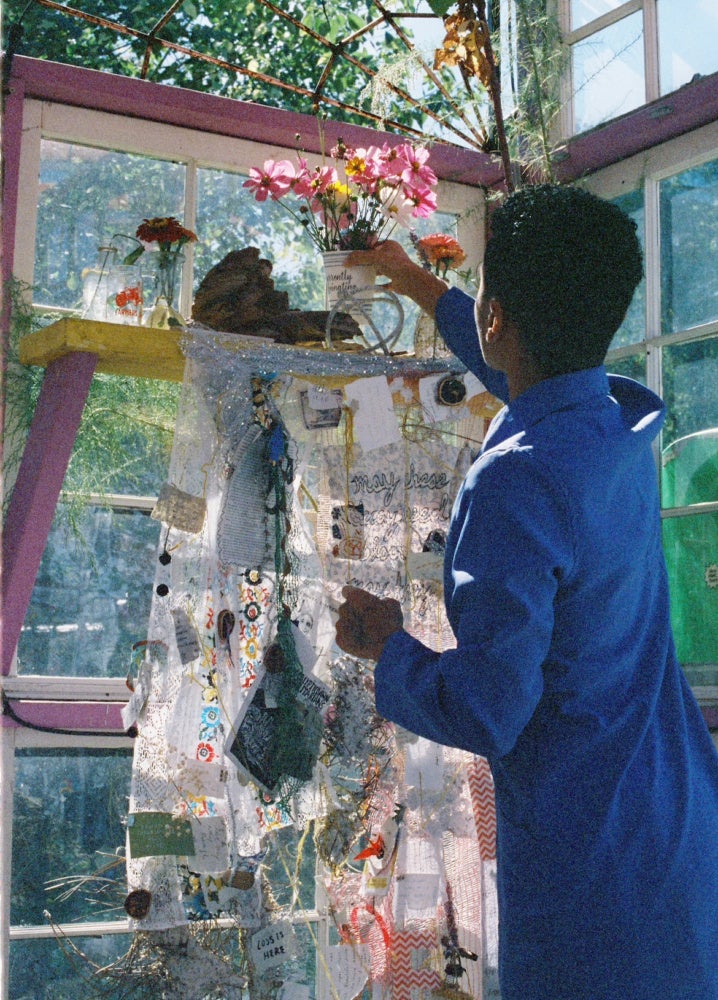
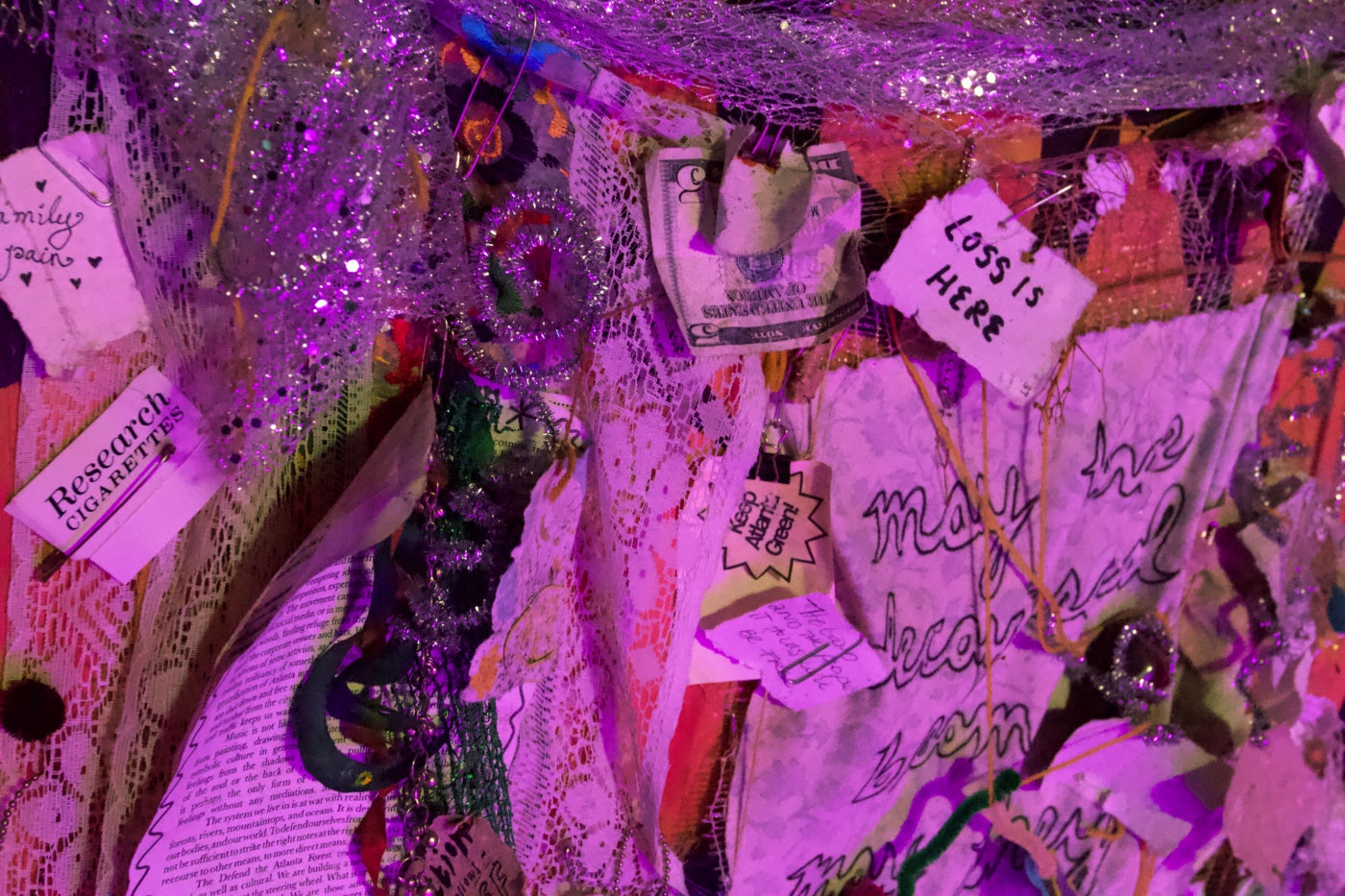
[1] “Atlanta’s Cop City Funding Approved Despite Protests,” The Guardian, June 6, 2023, https://www.theguardian.com/us-news/2023/jun/06/atlanta-cop-city-funding-approved.


